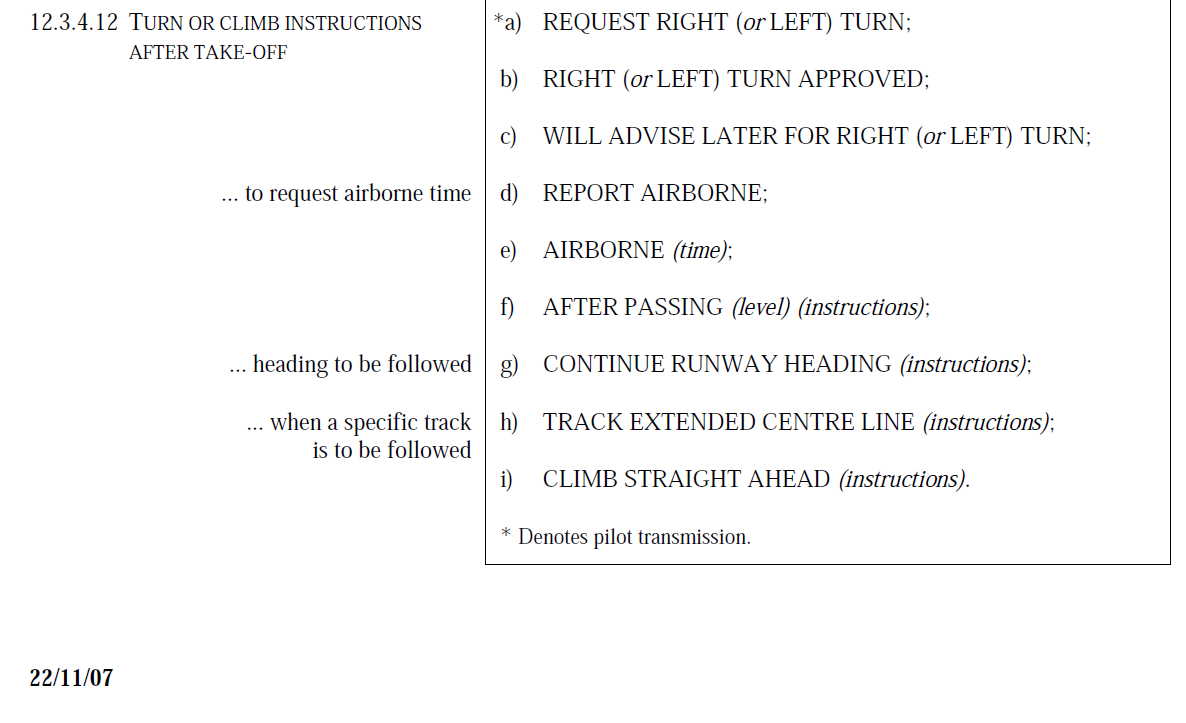ATC instruction "fly straight out"?
Thread Starter
ATC instruction "fly straight out"?
My base airport (USA) has closely spaced parallel runways. Tower often gives takeoff clearance including "fly straight out". A revised clearance will be given later when clear of traffic.
I assume that when the tower instucts "straight out" they intend the aircraft to track the runway extended center line. However, I cannot find the definition of "straight out" in any aeronautical publication. Is this a legitimate ATC instruction? If so, where is it defined?
The instruction "fly runway heading" is well defined and specifically does not require a heading offset to compensate for any crosswind. The aircraft should maintain the exact runway heading and the aircraft will drift away from the extended center line if there is any crosswind.
Tracking runway extended center line is easy enough on approach but not so easy with the runway out of sight behind the aircraft. The heading correction that worked over the runway may be hopelessly inadequate if climbing though a strong wind gradient. If "straight out" is a legitmate instruction how should it be flown in a aircraft that does not have a track display?
I assume that when the tower instucts "straight out" they intend the aircraft to track the runway extended center line. However, I cannot find the definition of "straight out" in any aeronautical publication. Is this a legitimate ATC instruction? If so, where is it defined?
The instruction "fly runway heading" is well defined and specifically does not require a heading offset to compensate for any crosswind. The aircraft should maintain the exact runway heading and the aircraft will drift away from the extended center line if there is any crosswind.
Tracking runway extended center line is easy enough on approach but not so easy with the runway out of sight behind the aircraft. The heading correction that worked over the runway may be hopelessly inadequate if climbing though a strong wind gradient. If "straight out" is a legitmate instruction how should it be flown in a aircraft that does not have a track display?
Join Date: Apr 2014
Location: Europe
Age: 33
Posts: 142
Likes: 0
Received 0 Likes
on
0 Posts
According to ICAO Doc 4444, "climb straight ahead" means "fly runway track". I assume "straight out" and "straight ahead" to be the same.
If there happens to be another departure on the parallel runway AND the crosswind component is large enough, I would clarify with ATC to make sure we are on the same page: "Tower, confirm you want us to track the extended runway centre line".
I believe every pilot should be able to eyeball an approximate heading to track the runway centreline after take-off. It's not localizer precision that's expected here, some deviation is fine. I remember during my first PPL flight lessons in a Cessna 172 (with no track information), the instructor kept glancing backwards over his shoulder to check how well I was tracking the runway centre line on my climbout.
Just curious, what kind of aircraft do you fly that doesn't offer any way of determining your track? Even old steam-gauge aircraft nowadays tend to have a GPS unit (Garmin etc.) that will give you a track indication. You could even use ForeFlight on your phone to get a track reading.
If nonetheless you can't fly a given track, just report that to ATC: "unable due to lack of track indication, request runway heading instead".

If there happens to be another departure on the parallel runway AND the crosswind component is large enough, I would clarify with ATC to make sure we are on the same page: "Tower, confirm you want us to track the extended runway centre line".
I believe every pilot should be able to eyeball an approximate heading to track the runway centreline after take-off. It's not localizer precision that's expected here, some deviation is fine. I remember during my first PPL flight lessons in a Cessna 172 (with no track information), the instructor kept glancing backwards over his shoulder to check how well I was tracking the runway centre line on my climbout.
Just curious, what kind of aircraft do you fly that doesn't offer any way of determining your track? Even old steam-gauge aircraft nowadays tend to have a GPS unit (Garmin etc.) that will give you a track indication. You could even use ForeFlight on your phone to get a track reading.
If nonetheless you can't fly a given track, just report that to ATC: "unable due to lack of track indication, request runway heading instead".

EXDAC,
I don't recall ever being told to "fly straight out" (not that I can remember every ATC instruction I was ever given). My FAR/AIM book is 20 years old but the Pilot/Controller Glossary didn't contain any definition of that term. It does define "fly runway heading".
If you haven't looked in 7110.65, try looking there to see if there's an FAA-centric definition:
https://www.faa.gov/air_traffic/publ...pubs/atc_html/
I don't recall ever being told to "fly straight out" (not that I can remember every ATC instruction I was ever given). My FAR/AIM book is 20 years old but the Pilot/Controller Glossary didn't contain any definition of that term. It does define "fly runway heading".
If you haven't looked in 7110.65, try looking there to see if there's an FAA-centric definition:
https://www.faa.gov/air_traffic/publ...pubs/atc_html/




